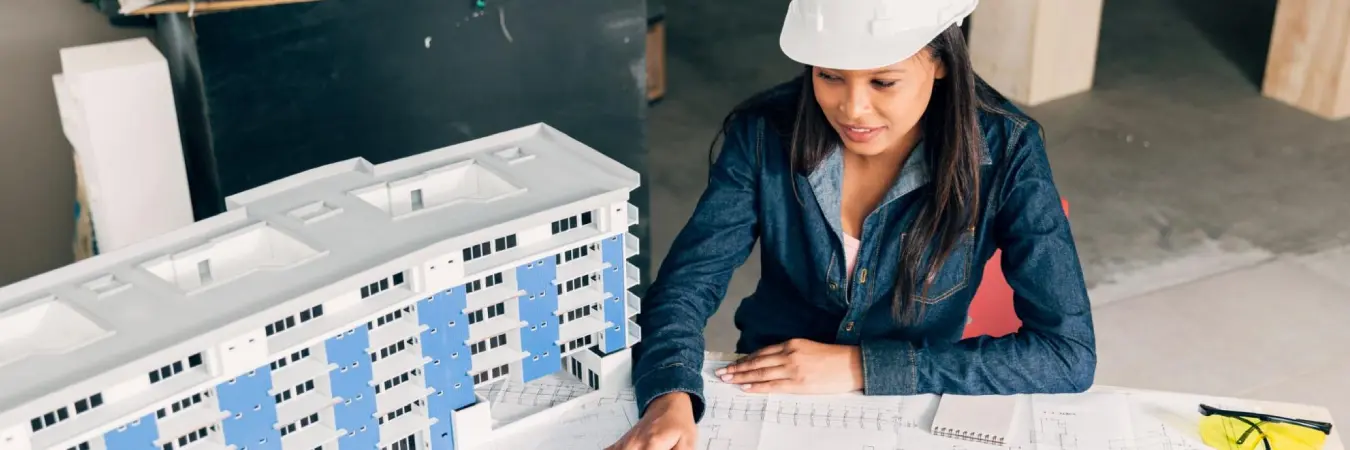What is TDR in Construction?
Table Of Contents
In India’s rapidly urbanizing landscape, TDRs emerge as a tool to reconcile development needs with environmental concerns. But like most people still getting accustomed to the various mechanisms of real estate, you are probably wondering exactly what is TDR in construction and real estate. TDRs essentially detach the “building potential” from a land parcel (often protected areas like wetlands or heritage sites) and allow its sale to developers in designated zones. These developers gain the right to construct beyond the usual limits, unlocking greater project value.
This unique mechanism delivers significant benefits to various stakeholders. Landowners are incentivized to preserve their valuable land by earning income from TDR sales, contributing to environmental conservation. Urban planners leverage TDRs to direct development to designated areas, preventing urban sprawl and protecting green spaces. In this blog by L&T Realty, we explore the concept of TDR and its importance in the world of real estate and construction.
TDR Full Form in Building Construction and Real Estate
TDR is an abbreviation for Transferable Development Rights. In India, Transferable Development Rights are essentially building permits detached from land ownership. Owners of restricted land (farmland, heritage sites) can sell these unused permissions to developers in designated development zones. Developers gain the right to build taller buildings, boosting profitability.
Why Transferable Development Rights?
India’s urban landscape faces a unique challenge: rapid development colliding with the need to conserve heritage, farmland, and green spaces. Enter TDRs, a market-based solution with deep roots in Indian social and economic priorities. By decoupling building potential from ownership, TDRs incentivize landowners to embrace conservation, offering income from selling unused development rights. Simultaneously, developers gain flexibility, building denser structures in designated zones, addressing space constraints without urban sprawl. This balances economic growth with environmental concerns, resonating with India’s emphasis on both progress and preserving cultural and natural heritage.
Moreover, TDRs align with the Indian ethos of fair compensation: landowners receive market value for their restricted land, fostering inclusivity and responsible development. Finally, TDRs promote efficient urban planning, a crucial aspect of managing India’s rapidly growing cities. In essence, TDRs offer a uniquely Indian approach to navigating the complexities of urban development, prioritizing both progress and responsible land management.
How TDR Works?
In India, Transferable Development Rights navigate the tricky terrain of construction and real estate development while aiming for sustainable growth. While the TDR process tends to vary from state to state, below is a rough explanation of how it goes:
Government Defines Zones
City master plans identify restricted areas (heritage sites, wetlands) where development is tightly controlled, and designated development zones where increased density is encouraged. Developers must adhere to the Floor Space Index (FSI), which dictates construction limits based on plot size and zoning.
Application by Property Owners
Landowners within restricted areas can apply for TDR certificates. These certificates, verified by the government, quantify the development rights they can sell based on their specific plot size and zoning regulations. It’s essentially the “building permission” detached from their land.
Government Authorization
Authorities delve into land ownership details and ensure there are no encumbrances. They meticulously calculate the TDR potential, considering restrictions and zoning rules. This ensures transparency and prevents misuse of the system.
TDR Market
Landowners have two options: direct sale to developers or participating in government-run TDR exchanges. These exchanges provide a platform for open bidding, potentially fetching higher prices. Developers, meanwhile, analyze the market to strategically purchase TDRs at competitive rates.
Integration by Developers
In designated zones, developers integrate purchased TDRs into their project plans. This allows them to construct beyond the usual FSI limits, increasing building density and project profitability. However, they must carefully comply with zoning guidelines to maintain urban planning integrity.
Decoding Jargon Related to TDR in Real Estate
TDR Certificate
A TDR certificate is official paperwork that authorizes the transfer of development rights from a restricted plot of land.
Restricted Areas
These are areas with limits on development, typically for reasons relating to heritage or environmental safety.
TDR Bonds
These are financial instruments issued by the government, representing a certain amount of TDRs. These TDR bonds can be traded and redeemed for actual TDR certificates.
FSI
Floor Space Index (FSI) refers to the ratio defining the maximum permissible built-up area on a plot of land.
Exploring the Benefits of TDR
Transferable Development Rights (TDRs) offer a unique solution for India’s growing cities, enabling urban development alongside environmental protection.
Benefits for Urban Development
- Directed Growth: Development concentrates in designated zones, preventing sprawl and protecting green spaces.
- Efficient Infrastructure: Funds generated from TDR sales can be directed towards public infrastructure projects.
- Sustainable Density: Dense construction in specific areas addresses space constraints while minimizing environmental impact.
Advantages for Property Owners
- Monetize Restricted Land: Earn income from selling unused development rights on protected land.
- Fair Compensation: TDR value reflects market dynamics, ensuring landowners receive fair value.
- Flexibility: Option to sell directly or through exchanges, maximizing potential gain.
Developer Advantages
- Increased Density: Build taller structures in designated zones, maximizing project profitability.
- Market Flexibility: Strategic purchase of TDRs allows for tailored development plans.
- Sustainable Approach: Contributes to responsible urban growth, improving project marketability.
Factors Affecting TDR Calculation
There is not a set formula for determining TDR, and it tends to vary across different regions. However, there are a number of factors that are important when it comes to determining TDR.
- Location: Restricted area type (heritage site, wetland) can affect the base calculation.
- Plot Size & Zoning: Larger plots and higher zoning allow for more TDR potential.
- Land Specifics: Unique features like historical significance or ecological sensitivity might adjust the calculation.
- FSI: The Floor Space Index of the designated development zone directly impacts how much additional construction TDRs enable.
- State Regulations: Each state has unique formulas and allocation criteria, influencing the calculated TDR amount.
- Market Dynamics: Ultimately, supply and demand in designated zones dictate the TDR’s market value, which can differ significantly from the calculated potential due to aspects such as location, economic conditions, as well as project specificity.
Case Study
Faced with preserving its historic walled city while fostering development, Ahmedabad turned to TDRs. This generated nearly Rs. 370 crore for the conservation of over 2,236 private heritage structures, breathing new life into these treasures while enhancing surrounding infrastructure and providing income for property owners. This balanced approach exemplifies the potential of TDRs in safeguarding cultural heritage alongside economic progress.
For more information, check out the link below:
https://constructiontimes.co.in/tdr-in-india-moving-towards-urban-regeneration
What is a TDR Certificate?
A Transferable Development Rights (TDR) certificate, also known as a Development Rights Certificate (DRC), is issued by a competent authority to the owner or lessee of a piece of land. This certificate is obtained when the landowner surrenders their development rights. TDR represents the development potential of a specific parcel of land and can be traded in the market for cash or used by the owner for their own development projects.
Legal and Regulatory Framework Governing TDRs
TDRs operate within a complex web of state-specific regulations and national guidelines. Here’s a quick snapshot:
Central Framework
The Foreign Exchange Management Act (FEMA) defines TDRs and regulates foreign investment.
The Model Transferable Development Rights (TDR) Guidelines by MoHUA provides a broad framework for states to adapt.
State-Specific Framework
Each state enacts its own TDR policy and rules, defining:
- Restricted areas: Where development is limited (heritage sites, wetlands).
- Designated development zones: Areas allowing higher density with TDRs.
- Eligibility: Who can buy and sell TDRs.
- Calculation methods: Determining TDR potential based on plot size, zoning, and regulations.
- Trading mechanisms: Direct sales, exchanges, or TDR bonds.
- Enforcement mechanisms: Ensuring compliance and addressing misuse.
Challenges of TDR
Transparency and Equity
Complex regulations and inconsistent implementation across states breed confusion and potential for misuse. Ensuring clear guidelines and fair access for all stakeholders is a crucial step that needs to be taken.
Market Fluctuations
TDR value relies on dynamic market forces, susceptible to economic downturns and speculative practices. Stabilizing mechanisms and responsible development planning are very much needed.
Environmental Concerns
While protecting some areas, TDRs might concentrate development elsewhere, potentially straining infrastructure and impacting ecology. Careful zoning and environmental impact assessments are vital aspects that need to be taken care of.
Public Participation
Limited involvement of communities in TDR decision-making can lead to resentment and lack of ownership. Inclusive planning and open communication are essential components to keep in mind.
FAQ’s
-
What is TDR in construction, and why is it important?
In India, TDR is a land development technique that lets owners of protected land sell unused development rights to builders in designated zones. This balances conservation with growth, gives landowners income, and guides development efficiently. It’s crucial for sustainable urban planning.
-
How is the value of a TDR calculated?
Calculating TDR value involves several factors: plot size, zoning, specific regulations, and even land features like heritage status. While formulas vary by state, it ultimately boils down to development potential multiplied by market forces. Location, demand, and project needs influence the final price, making it more than just a simple calculation of a straightforward formula.
-
What are the benefits of using TDR in real estate development?
Transferable Development Rights strike a healthy balance in real estate development. Landowners of restricted areas get compensated for preserving valuable land, while developers in designated zones can purchase TDRs to build denser projects. This guides city growth, controls density, and funds public projects through TDR revenue, creating a win-win for all stakeholders.
-
How do TDR certificates and bonds work?
TDR certificates grant extra building rights when land is dedicated for public use. These rights can be sold to developers who use them to build more in designated areas. Bonds aren’t typically used in TDR programs, though some offer financial compensation instead of development rights.
-
Can TDR be used in all types of construction projects?
No, TDRs in India have specific goals (conservation, infrastructure) and designated usage zones (developing areas). Not all projects qualify or fit the targeted locations. These are considered more as targeted development tools, and not as universal building permits.
Disclaimer: Stock image used for representational purpose only.


